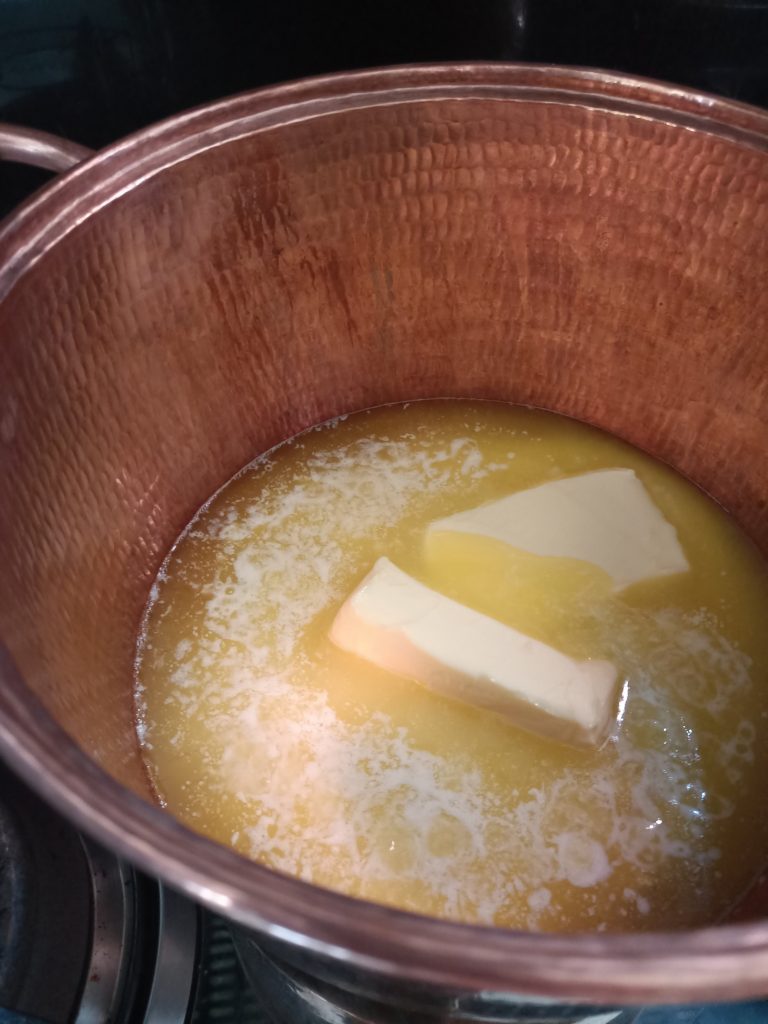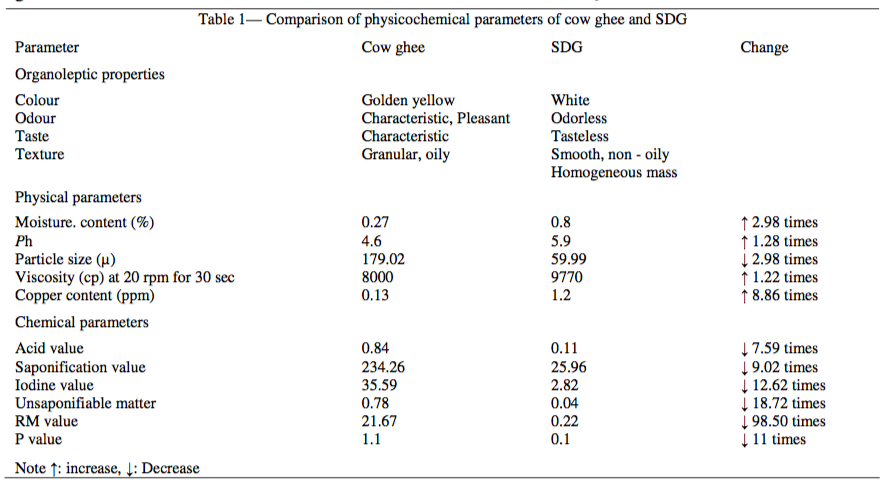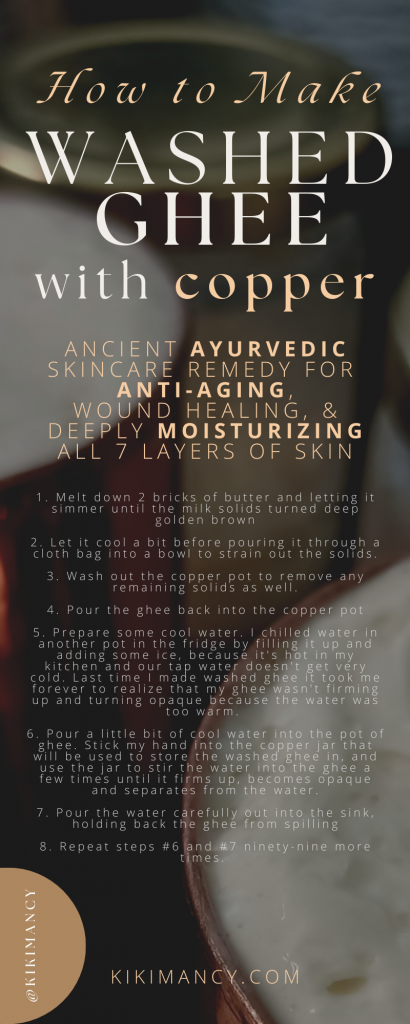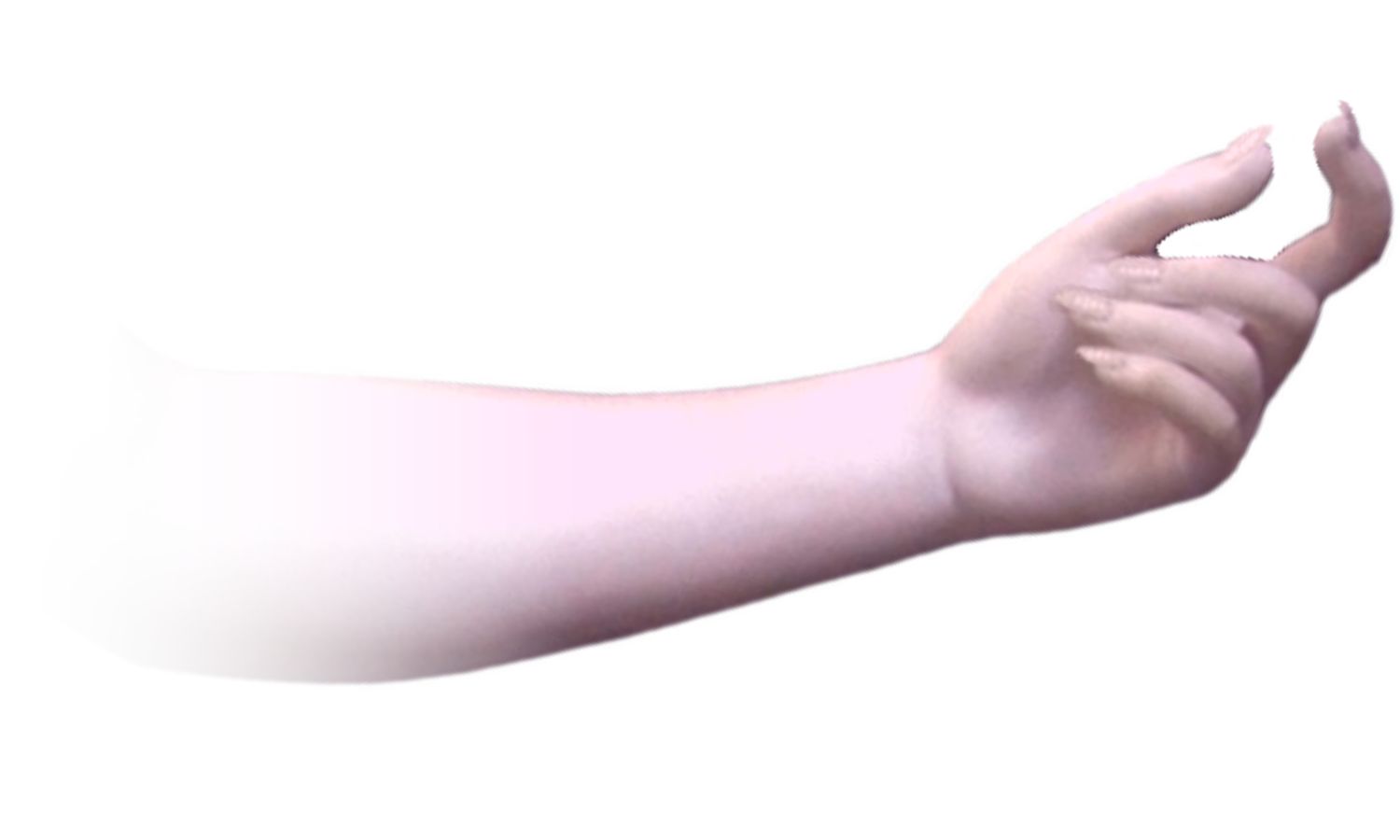
Washed ghee, or Shata Dhauta Ghrita, is an Ayurvedic skincare remedy made by “washing” ghee with water 100 times in a copper vessel.
The result is a whipped, incredibly light yet rich and moisturizing cream that is believed to have deep skin-penetrating (and healing) properties. I’m super obsessed with it, WAY more than any moisturizer or lotion I’ve ever used – and if you’ve followed my skincare journey on social media or through my forum, you know I’ve tried a LOT.
Disclaimer: I’m not an expert in medicine, science, skincare etc. Nothing I write is medical advice, I just share what works for me. I’m happy to answer questions when possible but always do your own research first.
I first learned of washed ghee from the blog Beets & Bones in November 2021 while I was researching how to make cultured butter – you can find the links to their butter and washed ghee posts in this thread:
Since then I’ve made two big batches of washed ghee, and I’m about to make my 3rd next week. I’ve learned a lot in this short period about making, using, and storing it.
In this post we’ll discuss some history, then my tutorial, tips, and troubleshooting, and finally the science of how it works.
History of Washed Ghee
Shata Dhauta Ghrita is a Sanskrit word which means 100 times washed ghee – ‘Shata’ meaning ‘hundred’, ‘Dhauta’ meaning ‘washed’ & ‘Ghrita’ meaning ‘Ghee’. [From A2 Organics]
Washed ghee is mentioned once in a Sanskrit text on Ayurveda called Charaka Samhitā, so it’s been in use at least since 400-200 BC. This text was actually based on an even older text from 800 BC called Agnivesha Samhitā so washed ghee was likely in use since before then, but I was not able to find a copy of the Agnivesha Samhitā to confirm if washed ghee was mentioned.
The Charaka Samhitā states that ghee is “the single best uncting substance… because of the continuance of the properties of refinement ([it has sukshma quality which helps it to nourish deeper and deeper tissues. Old ghee or “hundred times washed ghee” are said to have even more fine texture)….”
It continues on to state that the 4 best uncting substances are ghee, oil, fat, and marrow. Ghee is said to alleviate Pitta and Vata doshas (Ayurvedic body/mind constitutions). Ghee is “beneficial for Rasa, Semen and Ojas” and is “cooling, softening, and improves voice and complexion.”
The text also states the following about ghee in general, that it “promotes memory, intelligence, agni, semen, ojas, K and medas. It alleviates Vata, Pitta, poison, insanity, k phthisis, inauspiciousness and fever. It is the best of all fats, is cold, madhura rasa, madhura vipaka, has 1000 potentialities and so, is used properly according to prescribed methods, exerts 1000 types of action.” I’m not sure if k phthisis is a typo or not.
It also discusses “old ghee,” which is ghee that has been left undisturbed for at least 10 years and is believed to have its own unique healing properties, that “alleviates intoxication [alcoholic/ other], epilepsy, fainting, phthisis, insanity, poison, fever and pain in female genital tract, ear and head.”
This is interesting because according to one modern research paper, the shelf life of washed ghee is “was found to be in the range of 1.6 to 3.3 years at accelerated and 2.2 to 3.8 years at real time stability conditions.” So washed ghee seems to have a shorter lifespan than unwashed “old ghee,” as long as it’s been stored correctly, undisturbed.
Fun fact: The word ‘Ghee’ evolved from the old Sanskrit word ‘ghr,’ which means bright or to make bright.
How I made washed ghee

1. I made my ghee by melting down 2 bricks of butter and letting it simmer until the milk solids turned deep golden brown
2. Let it cool a bit before pouring it through a cloth bag into a bowl to strain out the solids.
3. I washed out the copper pot to remove any remaining solids as well.
4. Then I poured the ghee back into the copper pot
5. Prepare some cool water. I chilled water in another pot in the fridge by filling it up and adding some ice, because it’s hot in my kitchen and our tap water doesn’t get very cold. Last time I made washed ghee it took me forever to realize that my ghee wasn’t firming up and turning opaque because the water was too warm.
6. Pour a little bit of cool water into the pot of ghee. Stick my hand into the copper jar that will be used to store the washed ghee in (pictured below, the ones with the lids), and use the jar to stir the water into the ghee a few times until it firms up, becomes opaque and separates from the water.
7. Pour the water carefully out into the sink, holding back the ghee from spilling
8. Repeat steps #6 and #7 ninety-nine more times. You’re supposed to chant a special mantra in the Ayurvedic tradition, but I haven’t been initiated in this practice so I listened to inspiring podcasts instead lol
9. Store in copper jars (I got mine from a local artisan here in Indonesia but you can find them online, including on eBay)
TIPS:
- It DOES take 100 washes. Last time I used a blender and only washed it about 50 times, and the ghee started to smell rancid after a couple months. Again it is very hot and humid where we are so maybe you can get away with washing less in a cold climate, but it’s supposed to stay stable for a long time. Also, the completed product should have no scent, which washing more helps with.
- The ghee will increase in volume by the end. I’d guess around 50%. Most of the volume increase seems to happen in the first 20-30 washes, after that it doesn’t get much bigger. This is good to keep in mind when selecting containers.
- You can check my “washed ghee” highlight on Instagram to see videos of what it looks like at 22, 50, and 100 washes.
- And for more practical tips about washed ghee from an experienced practitioner:
People asked if it can be made with stainless steel, glass or brass instead of copper and he said it won’t work! He also said in one comment to STORE it in copper as well. When I stored mine in copper it turned green after a few weeks – he said when it starts to do that to store it in glass instead, and that you can use the green part on your hair but not your skin.
He also said to use desi or A2 cow ghee specifically, and not to add other base oils like almond or coconut, but rather essential oils: “For more benefits u can add essential oil.. like rose, sandalwood, lavender , tolus, saffron, khus … If u have sensitive skin then use lavender or u have oily skin ans normal skin then use peppermint oil.. in 100 gram ghee.. add only 8 to 10 drops lavender oil. Or if u will use papermint oil then add only 3 to 5 drops after washing”
My hands are look REAL nice in the days after after making washed ghee. Soaking your hands in fat for nearly 2 hours is healing to the skin, who knew. Another point for making it the traditional way, by hand rather than in a blender.
Troubleshooting
So far I’ve had 3 problems in my washed ghee journey.
- The washed ghee stays liquid while washing. This just means you need to add colder water, even ice water.
- The washed ghee goes rancid. This means you didn’t wash it enough. The first time I made it I only washed about 50 times and definitely noticed a smell after a few weeks of tropical Indonesian weather. I was able to neutralize it with essential oils as I mentioned above. The 2nd time I made it and actually washed the full 100 times, I have not noticed any smell.
- The washed ghee turns green. So I have 2 containers of washed ghee stored in copper and I noticed that after a few months the ghee in the 2nd container that hasn’t gotten used up was turning green where it touches the copper. In the comments of this video he says that if it’s turned green, use it on the hair but not on the skin (I think that’s what he says, I used Google Translate). In the comments the person also mentioned the ghee turning blue (which I haven’t experienced) and he said that in that case just throw it away.
How Does Washed Ghee Work?
In this section I’ll share the research papers I’ve found on washed ghee, ghee generally, and copper peptides, and also my personal field notes from using washed ghee.
Here’s an interesting chart comparing the chemical properties of regular ghee to washed ghee (labeled SDG):

Notice the copper content of the ghee increased over 8 times when it was washed!
I’ve searched for research that discusses how the copper infused into the washed ghee interacts with skin and haven’t found anything that answers that specific question. This particular paper that I pulled the above chart from focuses on how the copper acts as a catalyst to promote splitting of the fat molecules into smaller and smaller sizes, which gives the washed ghee its characteristic silky whipped texture and makes it so absorptive:
“Copper can act as a catalyst to promote fat splitting. The above hypothesis of fat splitting by using large excess of aqueous phase can be correlated with the idea of washing cow ghee 100 times with water. It can be pointed out that by washing cow ghee 100 times with water, the triglycerides are split into glycerol and free fatty acids.” Source
The fat molecules are made smaller and smaller with each wash so they penetrate into the skin more deeply, allegedly through all 7 layers of skin, which are named in this diagram:

NUTRITIONAL COMPOSITION OF GHEE
Ok here’s where to really do your own research because I am not a nutritionist or chemist. If you are, please correct me if I’m wrong:
Ghee contains a higher concentration of fat than butter – slightly more butyric acid and other short-chain saturated fats, as well as conjugated linoleic acid, a type of polyunsaturated fat (PUFA). There is a lot of discourse in the holistic health community these days about the role of PUFAs in the diet and skincare products. Some opt to remove products containing PUFAs from their skincare routines completely.
But if PUFAs are bad for your skin, and washed ghee contains PUFAs, why is washed ghee so great for the skin? This question is beyond my area of expertise, but one of my favorite health tweeters mayabacelar has a great thread discussing PUFAs in skincare that adds some nuance to the discussion:
I highly recommend clicking through to reading the rest of the thread.
So back to ghee research – there is quite a bit of info out there on the wound-healing benefits of ghee: “Ghee is also seen to exhibit excellent wound healing property owing to its antimicrobial, immune-stimulant and antioxidant activity” Source
“The better wound closure has also been observed previously in wounds treated with ghee alone and ghee based formulations. It was attributed to the better activity of myofibroblasts. However, the direct influence of ghee on the activity of myofibroblasts is less discussed in the available literature. In this study, Ghee treated wounds showed significantly higher activity of myofibroblasts on day 8. On day 16, its activity was significantly reduced. This reaffirms the role of ghee in early wound closure without scar formation.”
So ghee alone is very healing for the skin, suggesting that washed ghee will also heal the skin even if you can’t make it in copper tools as the ancients instructed. But modern research on the effects of copper on skin suggests that the traditional method would provide even more benefits than ghee alone.
The crucial question that I haven’t been able to find an answer to is whether the copper that becomes infused into washed ghee is of the same structure as the copper peptides used in modern skincare products (and therefore are most heavily researched). Which brings us to our next topic:
Copper Benefits for Skin
According to this paper I found on the website Skin Biology, “Small copper peptides have an excellent safety record and are widely used in cosmetic products. The most studied copper peptide is GHK-Cu (glycyl-L-histidyl-L-lysine), a small copper-binding peptide, naturally present in human plasma.” Copper peptides support “wound contraction and epithelization, and increasing the production of growth factors and activity of antioxidant enzymes… GHK-Cu is able to up- and down-regulate a significant number of human genes, essentially resetting the human genome back to health.”

It’s worth noting that Skin Biology sells their own brand of copper peptide. This doesn’t invalidate the research by any means but it’s important to keep in mind when there’s a financial incentive. The author, Loren Pickart, has written the majority of research papers I’ve found regarding the use of copper in skincare.
The paper also states, “Controlled studies on aged skin demonstrated that it tightens skin, improves elasticity and firmness, reduces fine lines, wrinkles, photodamage and hyperpigmentation. GHK-Cu also improves hair transplant success…” Which brings me to my personal experience with washed ghee and copper products:
I use my washed ghee all over my body all the time, and I have been especially loving the effects of washed ghee and other copper peptide products after microneedling. I microneedle my face, hairline (to boost hair growth), neck, decolletage, hands, arms, and sometimes even my shins once or twice a week, every week – except when I’m on my period and my pain tolerance is close to zero.
My post-microneedling routine is to apply my copper products, then sit in front of my red light for 5-10 minutes and then go to bed. I’m seeing the most impressive results on my neck and hands, which sustained some sun damage and loss of elasticity from sunbathing here in the tropics almost every day for the past few years – which I don’t plan to stop, so I’m glad microneedling is working so quickly to unwind the sun damage lol.
So to close, I hope you’ve learned everything you need to know to succeed on your own journey with washed ghee. It’s so rewarding! I still have so many questions left unanswered though, and I invite anyone more chemistry-literate than me to chime in. Like how many forms of copper are there in skincare? What’s the difference between copper and a copper peptide? I would love to see a research study on the skincare benefits of washed ghee made in glass or other materials, compared to washed ghee made in the traditional method using copper utensils. And I would love to see some good, clinical before & after pics!
Thank you for reading! If you enjoyed this article, you’ll love my Slow Beauty forum, a community where we discuss all things health, wellness, and beauty. We have a private forum here on kikimancy.com with a dozen topics and thousands of member posts, and also a private Twitter Community with over 100 members. The vibe of these spaces are very magical, thoughtful, and life-affirming. Esoteric slumber party vibes with some of the coolest, smartest babes on the internet. Join here:

I learn so much from the Slow Beauty babes every day, and I share much more (and more candidly) in the forum and Twitter Community than I do on my public socials and blog. If this sounds appealing to you I do hope you’ll join us.
Be well,
Kiki
PS: If you love healthy, easy beauty hacks that really work, check out my Rice Water for Hair Growth blog post – I just updated it with a before & after comparing my hair growth from 2019 to 2022.
Save this to Pinterest:

